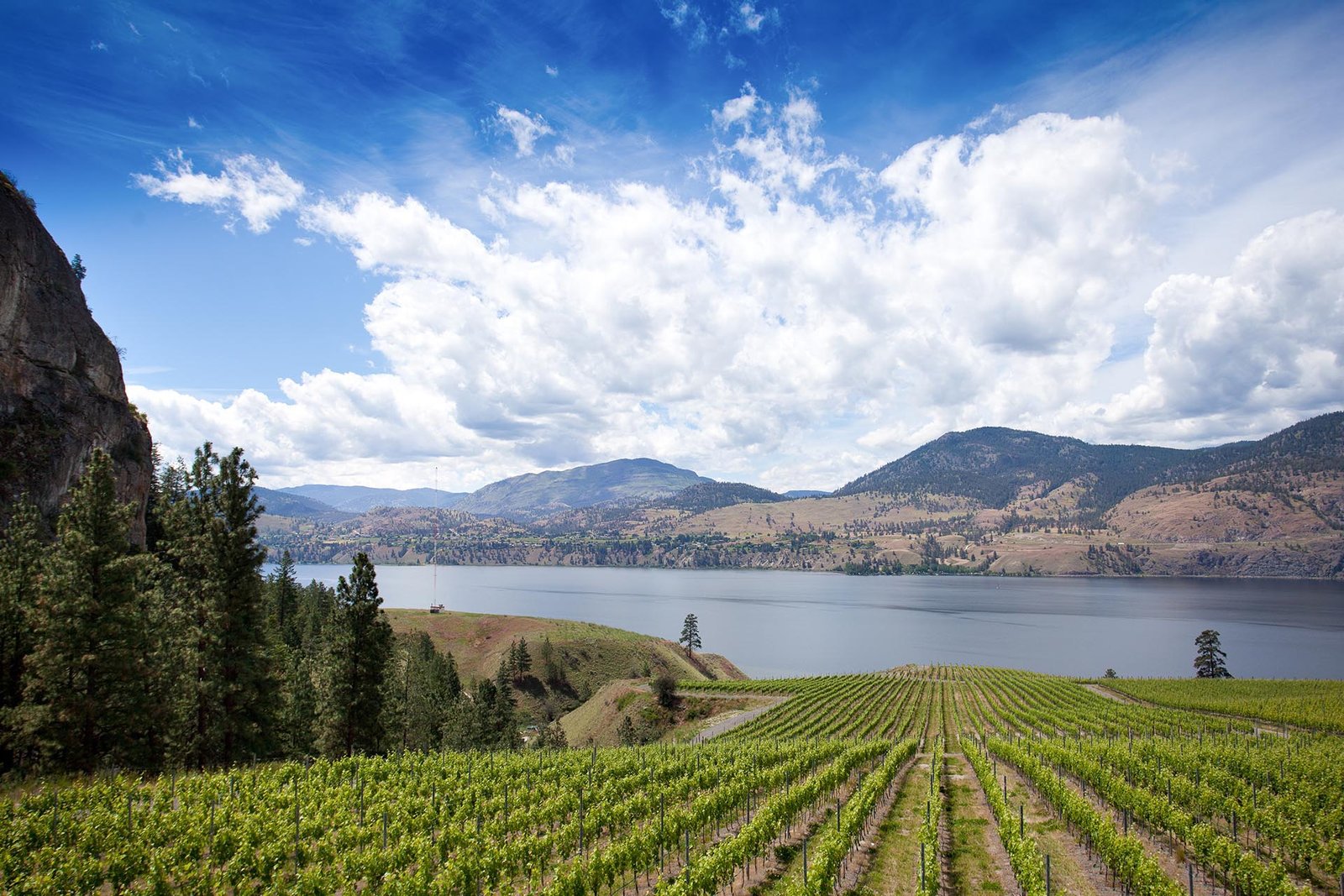It’s Nearly Impossible to Get Canadian Wine in the U.S. Here’s Why.

[ad_1]
Ryan Totman was pretty certain that an orange wine made from La Crescent grapes would catch the eye of connoisseurs at Corkbuzz in New York City. But two years later, he still had a few bottles of Pinard & Filles Frangine, a natural wine from Canada.
“It offers exploration, but we know it wouldn’t be something that people flocked to on their own,” says Totman, beverage director, Corkbuzz. “It just sits there.”
When wine geeks recount the most rare and unusual bottles they’ve ever had, Slovenian Pinela or Croatian Xynisteri may come up. But few think about Canadian wines. Besides the Inniskillin Icewine, a dessert pour that put the Canadian wine industry on the map in the 1990s, the country’s wines are nearly nonexistent to most American wine drinkers.
“It signifies that we’re getting on the map internationally.” –Jennifer Huether, Canadian Master of Wine
Wineries, importers, trade reps and sommeliers claim 99 reasons why it’s hard to find Canadian wine in the U.S., but quality isn’t one of them. Now that most producers focus on varietal wines like Pinot Noir, Cabernet Franc, Chardonnay and Riesling, “the wines are so good,” says Canadian Master Sommelier Jennifer Huether. “It’s coming out of a cottage industry, and it is making it beyond icewine.”

She and John Szabo, another Canadian Master Sommelier, were thrilled when the Court of Master Sommeliers asked them to present a Spring 2020 class on the country’s wines to advanced candidates.
“It signifies that we’re getting on the map internationally,” says Huether.
That elation turned to frustration when they sought distributors to get the wines to Texas. They had a hard time importing the nine wines for their seminar, and the needed approvals were going to take several months. The scarcity of Canadian wines in the U.S. comes down to supply and demand.
Even Canada’s premier wine provinces, Ontario and British Columbia, produce relatively small amounts of wine.
Ontario, Canada’s largest wine-producing region, has about 17,000 acres planted to cool-climate varieties. Magdalena Kaiser of the Wine Marketing Association of Ontario says the region exports only 5% of its production.
In British Columbia, Okanagan, known for its bolder red wines, has 11,000 acres under vine. Just 3% of its production is exported, says Laura Kittmer of Wine Growers British Columbia. Of those exports, 18% go to the U.S.
By contrast, grapevines cover 44,000 acres in Napa Valley, 62,000 acres in Sonoma County, and 103,000 acres in Lodi.
Most Canadian wine is snapped up in the region where it’s produced, says Randy Dufour, vice president of exports for Arterra Wines Canada.

Even in Ontario, it’s hard to find hot bottles produced by Nk’ Mip Cellars, the first Indigenous-owned and operated wine brand in North America, or Le Clos Jordanne, which makes about 2,500 cases of Burgundian Pinot Noir and Chardonnay per year.
Production costs are high in Canada, which are passed on to consumers. That puts Canadian wines in competition with premium bottlings from more established regions like New Zealand.
“The U.S. is just a very competitive market, and the California wine industry is no slouch,” says Paul Speck, who owns Henry of Pelham in St. Catharines, Ontario, with his brothers.
Speck says his family produces about 175,000 cases of wine per year and exports quite a bit of that to the UK, Denmark and Belgium. They only send up to 4,000 cases to America each year. Still, the U.S. market matters.
“You need to have a major wine-drinking country recognizing the quality of your wine, even if you don’t sell that much in them,” says Speck.
Dufour agrees that America is the place to build brand equity, despite the unfavorable exchange rate. Canadian brands spend 20% more to market their wines in the U.S.
“Celine Dion, Michael Bublé, even these comedians, until they’ve made it big in the U.S., we don’t appreciate them,” says Dufour. “If you can make it in New York, you can make it anywhere. It’s the international success that makes it more attractive in Canada.”

It can be difficult for smaller wineries to attract American importers and distributors. Dave Esber, a wine and beer importer based in Ohio, says that blanc de blancs by 13th Street Winery, red blends by Megalomaniac, and icewine by Donald Ziraldo, a godfather of the Ontario wine industry, have been good for his portfolio.
“The wines are high-quality and the growing conditions are excellent,” says Esber. “Ignorance has been the problem.”
Ziraldo, who created Inniskillin’s famous icewine along with Karl Kaiser, says when he was invited to pour at the James Beard House’s 150th anniversary celebration in New York City, he had to smuggle his wine into the U.S. So he was happy when Esber approached him.
He says Canadian icewine created an entry for the country’s wineries. “Psychologically, the Americans get it,” says Ziraldo. “Ice comes from Canada, and [so do] hockey and Wayne Gretzky.”
Inniskillin earned international fame when it won the Grand Prix d’Honneur at the 1991 Vinexpo in France, but it became a moneymaker when it was featured in the LVMH-owned DFS Group duty-free shops. Japanese travelers started to request icewine, so the shops continued to order it. Now, Canadian wine producers need to build demand.
Still, Canadian wines pop up in unexpected places, like Heinen’s, a family-owned grocery chain with 23 stores in Ohio and Illinois. Ed Thompkins, its director of wine and beer events, says customers trek regularly to wineries in Niagara, a three-hour drive from Cleveland. He’s excited about the exclusive rosé blend of Pinot Noir, Gamay, Riesling and Pinot Gris that Henry of Pelham created for Mother’s Day.
“The wines are excellent,” says Thompkins. “They’re amazing values, given the exchange rate. The exchange has been around 30%. That’s like getting a California wine for wholesale.”
[ad_2]






